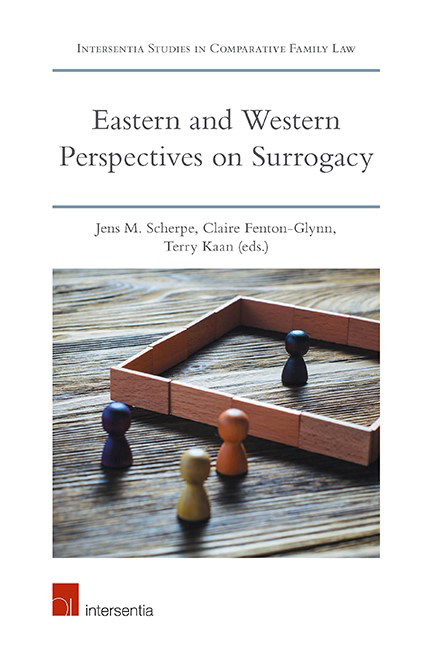Book contents
- Frontmatter
- Preface and Acknowledgements
- Contents
- List of Contributors
- Introduction
- Questionnaire
- PART I WESTERN PERSPECTIVES
- THE PROHIBITIVE APPROACH
- THE TOLERANT APPROACH
- Australia
- Australia: A Judicial Perspective
- England and Wales
- England and Wales: A Judicial Perspective
- THE REGULATORY APPROACH
- THE FREE MARKET APPROACH
- THE INFLUENCE OF INTERNATIONAL COURTS
- PART II EASTERN PERSPECTIVES
- THE PROHIBITIVE APPROACH
- A TOLERANT APPROACH?
- REGULATION THROUGH PROFESSIONAL MEDICAL BODIES
- FROM FREE MARKET TO REGULATION
- PART III COMPARATIVE PERSPECTIVES ON SURROGACY
- Index
- About the Editors
England and Wales
from THE TOLERANT APPROACH
Published online by Cambridge University Press: 26 June 2019
- Frontmatter
- Preface and Acknowledgements
- Contents
- List of Contributors
- Introduction
- Questionnaire
- PART I WESTERN PERSPECTIVES
- THE PROHIBITIVE APPROACH
- THE TOLERANT APPROACH
- Australia
- Australia: A Judicial Perspective
- England and Wales
- England and Wales: A Judicial Perspective
- THE REGULATORY APPROACH
- THE FREE MARKET APPROACH
- THE INFLUENCE OF INTERNATIONAL COURTS
- PART II EASTERN PERSPECTIVES
- THE PROHIBITIVE APPROACH
- A TOLERANT APPROACH?
- REGULATION THROUGH PROFESSIONAL MEDICAL BODIES
- FROM FREE MARKET TO REGULATION
- PART III COMPARATIVE PERSPECTIVES ON SURROGACY
- Index
- About the Editors
Summary
GENERAL LEGAL FRAMEWORK
THE LEGAL FRAMEWORK FOR SURROGACY
England and Wales is regulated by two key pieces of legislation: the Surrogacy Arrangements Act 1985, and the Human Fertilisation and Embryology Act 2008 (‘HFEA 2008’). Having said this, there has been a large body of jurisprudence built up by the courts in this area which has substantially affected the way in which this legislation is applied. In examining the English law, it is important to note that it does not regulate when, how, or by whom a surrogacy arrangement can be entered into. Rather, it regulates the effects of the surrogacy – how legal parenthood can be transferred after birth.
While England has been lauded as a jurisdiction that is very permissive towards surrogacy, in truth, the legislative framework for recognising parenthood through a surrogacy arrangement is highly restrictive. Although it does provide a specific mechanism for transferring parental status from the surrogate to commissioning parents – unlike in so many countries where adoption laws have been co-opted to this purpose – the circumstances in which this can be granted are narrow.
The opposition of the British government to surrogacy can be traced back to the Report of the Warnock Committee, which was set up in 1982 to inquire into the technologies of IVF and embryology. The Committee argued that surrogacy constituted an attack on the value of the marital relationship, as it introduced a third party into the process of procreation, which they believed should be confined to the ‘loving partnership between two people.’ They suggested that it was inconsistent with human dignity for a woman ‘s womb to be used for financial profit, and treated’ as an incubator for someone else ‘s child’ and that given the risks relating to pregnancy, no woman should be asked to undertake it for another person in order to earn money. Furthermore, the Committee felt that the relationship between mother and child was distorted by surrogacy and argued that it was degrading for a child to be treated as a commodity and ‘bought for money’.
- Type
- Chapter
- Information
- Eastern and Western Perspectives on Surrogacy , pp. 115 - 134Publisher: IntersentiaPrint publication year: 2019
- 1
- Cited by



